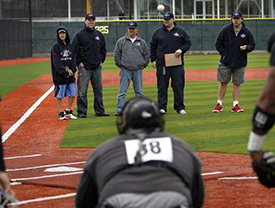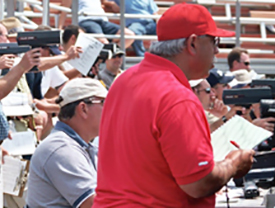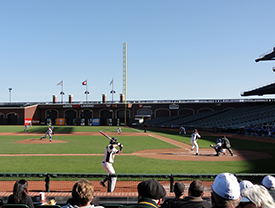Scout Eval
about Scout Evaluation
Scouts cannot be everywhere at no fault of their own… lots of ground and ball parks to cover in the United States and abroad to find the five tool players for the draft or free agents. The scout evaluation is a resource for the players that are above average in 5 areas of scouting and in an area where scouting is scarce or has not received any attention or scout contact.
We have set certain expectations to move forward with an official scouting evaluation and reserve the right to accept or deny a submission or move forward with any action.
HITTING (All skills below) This is the most difficult tool to scout because you are judging a hitter on how they will hit at the major league level, by watching them hit against amateur pitching. There are a lot of amateur hitters that will look great against amateur pitching and then fall flat on their face once they enter professional baseball. A hitter should have these skills: the ability to swing the bat quickly; the ability to consistently hit the ball hard; knowledge of the strike zone; the ability to turn on a fastball; the ability to hit breaking pitches and go opposite field; the ability to hit to all fields and the ability to make adjustments at the plate when fooled.
POWER (Able to drive the ball) Hitting the ball for power is one of the more desirable traits for any hitter; unfortunately it is often the most poorly projected tool at the major league level. In order to hit for power, a hitter needs outstanding bat speed. Bat speed is what makes the ball travel and all outstanding hitters have it. A player with power will regularly hit the ball over the fence in batting practice and should be able to drive the ball over 400 feet.
FIELDING (All traits below) This is the one tool that has the greatest chance of improvement. While you cannot develop great foot speed or a great arm, fielding has the greatest chances of improvement. Composite fielding traits: (Quick Feet) the ability to move quickly laterally and forward and back; (Range) how much ground coverage; (Soft Hands) the ability to catch the ball smoothly in the center the glove; (Quick Hands) the ability to field bad hops.
SPEED (6.8 or less in 60 yard dash) Foot speed is the only common denominator of offense and defense. This is one tool that does not go into slumps. A fast runner is of greater priority for clubs that play on artificial turf because they are playing in a bigger park and the ball travels faster than on grass. A fast outfielder may be able to catch up to two more balls a game, saving his ball club an average of one run a game; the same player can steal bases on offense.
ARM STRENGTH. This is a tool that is often overlooked by ball players today and one of the most lacking tools at all levels. The player with a strong arm will have fewer teams take a chance by running against him thus preventing runs from scoring. Thus a team with a weak throwing outfield or catcher will have more opportunities taken against them leading to more throwing errors and more runs given up.
OUTFIELDERS (four requirements) A strong overhand throw, a straight-line trajectory, good carry, good life on the throw and online.
INFIELDERS (four requirements) Throws made from the outfield grass or deep short; a strong overhand throw, a straight-line trajectory, good carry, online throw and good life on the ball when it reaches the first baseman glove.
PITCHERS (89+ mph) A God-given talent that can only be improved to a certain degree, one game under a radar gun will tell if the pitcher has the arm strength to be a major league prospect. A fastball will lose 8 mph from the time it leaves the pitchers hand to the time it crosses home plate. The average major league fastball is 90-91 mph and will rarely sign who does not throw at least 89 mph.
CATCHERS (pop time less than 2.0) The catcher will provide leadership on the field and work with the pitcher when setting up the hitters and calling the game. Catchers must be durable and is responsible for the team defense. A catcher needs soft hands, quick feet and the ability to block pitches in the dirt. A good catcher pop time is under 1.90 seconds; some catchers can break 1.75 seconds.









